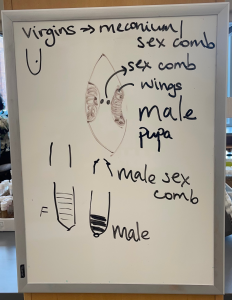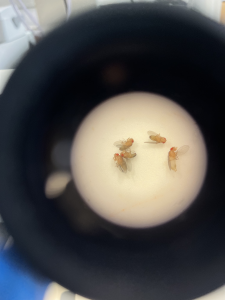After having started part-time training in the Horner lab two weeks ago, I was very excited to begin research with them full-time with BSURF this Monday. I have been very interested in finding a lab where I can explore the laboratory functions of molecular biology because of my longstanding interest in biochemistry, symbiosis, and genetics, and was especially interested in the virus-host interactions work as well as the people of the Horner Lab.
It takes a little bit of background to explain why I was eager to join this lab in particular. Throughout high school, I volunteered as a zoo docent at a local conservation center. Through this, I gained an interest in symbiotic interactions among species and decided to learn more about this in my own time. I read a book on viral-host interactions by David Quammen, called Spillover, and fell in love with it and the topic itself. As I was beginning my journey into the world of biology at Duke in the first semester, I took an epigenetics course where, at the end of the semester, we were able to meet and tour the labs of some of the MGM (molecular genetics and microbiology) department and just happened to tour the Horner lab. I was very excited to tour this lab in particular already because it seemed similar to my interests. As we went into Dr. Horner’s office for questions after the tour, I noticed the very same book that sparked my interest in molecular species sitting on her desk! I mentioned it to her, and through this common connection became invested in the ideas of the Horner lab in particular. So of course, I was extremely pleased to know that I was placed in the Horner lab through BSURF at the end of last semester.
In all my interest to dive into this lab of viral and host interactions and discover the research behind what I have been reading about, I quickly found that I have a lot to learn about how research is conducted than what my lab classes and readings have taught me. After my first day in the lab finishing up online training, my mentor got me started on some general molecular biology procedures. She asked:
“Do you know how to run a gel?”
“I think so!” I said, wanting to impress my mentor with knowledge learned through my 2 gel-making experiences in biology 201 labs. I, in fact, soon realized that I did not know how to run a gel by myself. Between pipetting errors, sloppy agarose, and a lack of understanding of electrical currents, it took me three tries with lots of friendly instruction from my mentor to run a gel where all samples appeared in the correct place. I felt discouraged through the first of these runs, but each time my mentor used it as a learning experience to help me address what was going on and learn more about what was happening in the experiment on a molecular level. From this first set of trials in the lab, I quickly learned that research would not be as straightforward as one might hope it to be. There will be many errors, mistakes, and hard to explain results that can be learned from. There will also be many explorations, exciting conversations, and opportunities to grow in ability and interest. With this, I am quite excited to begin my journey into all parts of biological research this summer!


